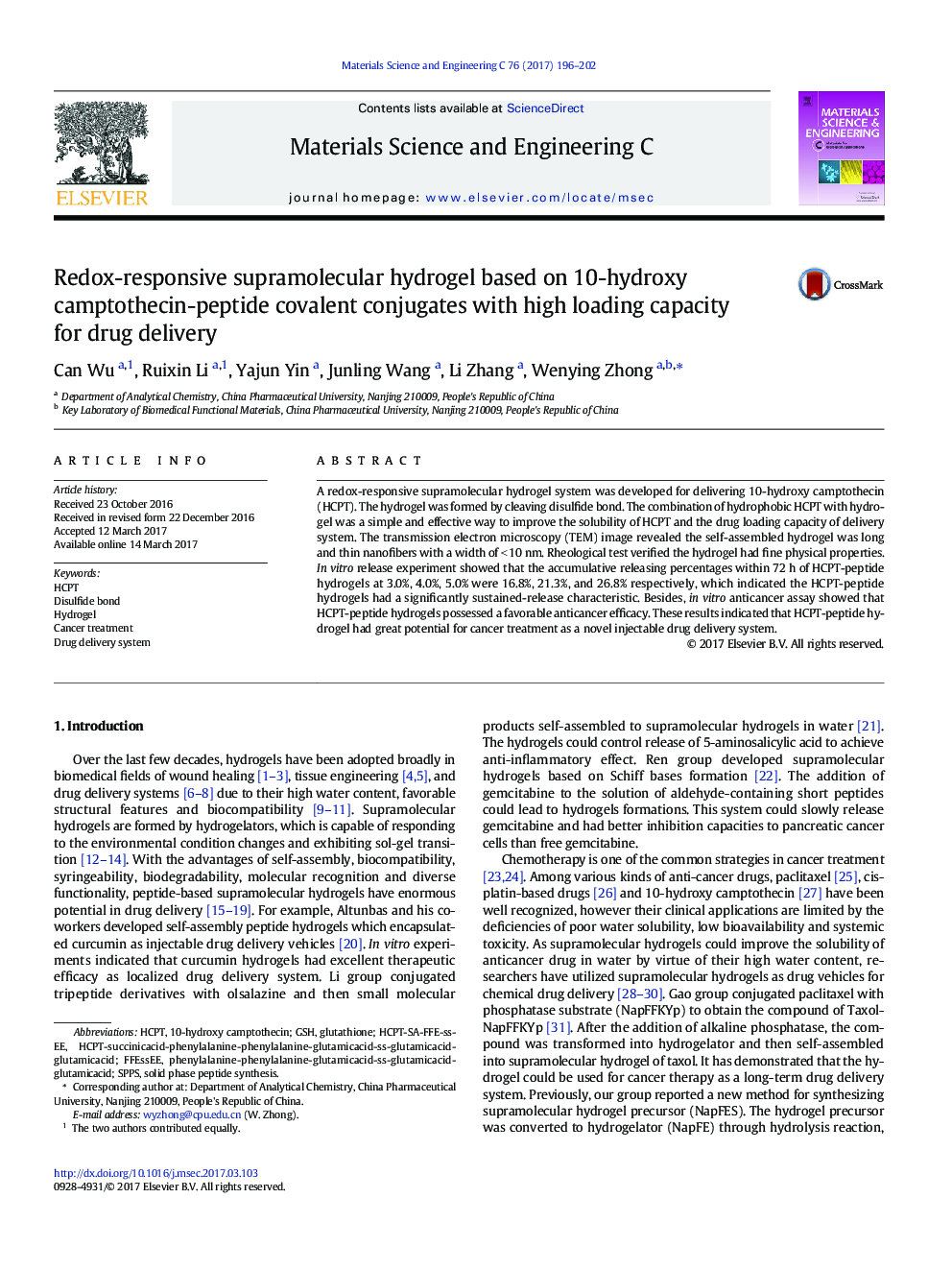| Article ID | Journal | Published Year | Pages | File Type |
|---|---|---|---|---|
| 5435109 | Materials Science and Engineering: C | 2017 | 7 Pages |
â¢A redox-responsive supramolecular hydrogel system was developed for delivering 10-hydroxy camptothecin (HCPT).â¢The hydrogel was formed by a biocompatible of cleaving disulfide bond.â¢The drug loading efficiency of the hydrogel was > 6.6 mg/mL.â¢The hydrogel possessed recovery and shear-shinning properties and could be used as injectable drug delivery system.â¢The hydrogel had a significantly sustained-release characteristic and possessed a favorable anticancer efficacy.
A redox-responsive supramolecular hydrogel system was developed for delivering 10-hydroxy camptothecin (HCPT). The hydrogel was formed by cleaving disulfide bond. The combination of hydrophobic HCPT with hydrogel was a simple and effective way to improve the solubility of HCPT and the drug loading capacity of delivery system. The transmission electron microscopy (TEM) image revealed the self-assembled hydrogel was long and thin nanofibers with a width of <Â 10Â nm. Rheological test verified the hydrogel had fine physical properties. In vitro release experiment showed that the accumulative releasing percentages within 72Â h of HCPT-peptide hydrogels at 3.0%, 4.0%, 5.0% were 16.8%, 21.3%, and 26.8% respectively, which indicated the HCPT-peptide hydrogels had a significantly sustained-release characteristic. Besides, in vitro anticancer assay showed that HCPT-peptide hydrogels possessed a favorable anticancer efficacy. These results indicated that HCPT-peptide hydrogel had great potential for cancer treatment as a novel injectable drug delivery system.
Graphical abstractDownload high-res image (181KB)Download full-size image
